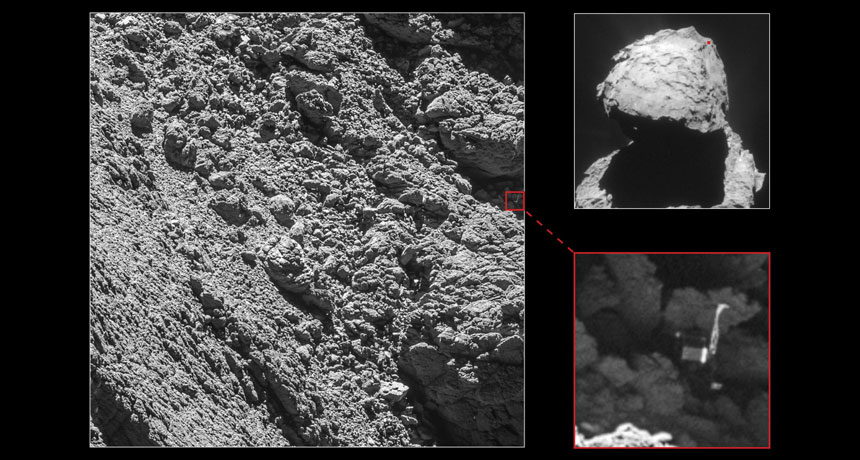Lost lander spotted on comet’s surface
Spacecraft tumbled into the shadow of a cliff

Where’s Philae? The spacecraft (left, and bottom right), seen in this September 2 image from the Rosetta spacecraft, has been hiding on comet 67P (top right) since November 2014.
ESA, ROSETTA, MPS FOR OSIRIS TEAM; MPS, UPD, LAM, IAA, SSO, INTA, UPM, DASP, IDA; CONTEXT: ESA, ROSETTA, NAVCAM, CC BY-SA IGO 3.0







